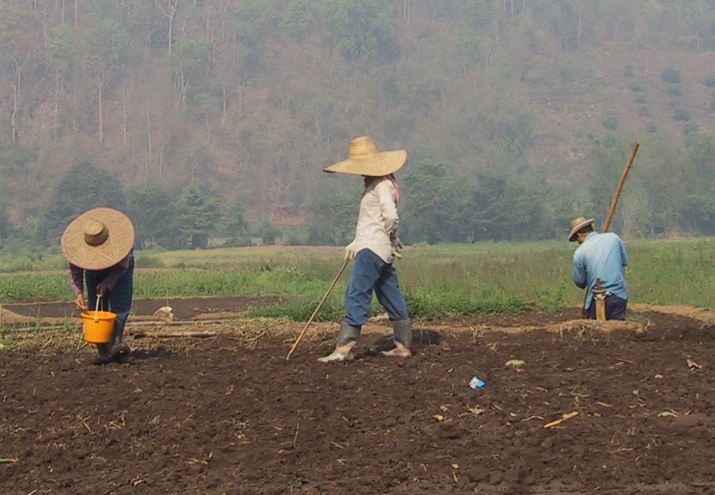This is the third in a series of posts which will provide short extracts from my new book on Thailand’s Political Peasants. In the first extract I wrote that “rural Thailand’s new ‘political society’ is energized by a fundamental desire to be productively connected to sources of power.” In the second extract I explained what I mean by “political society” focusing on the productive intersection between the welfare and subsidy programs of the state and the preservation of the peasantry. In the following extract I focus on the core dilemma arising out of this preservation – the relatively low productivity of a large proportion of Thailand’s workforce (pp. 45-46):
As Thailand’s economy has diversified and grown, the contribution of agriculture to GDP has declined. In 1960, agriculture contributed 36 percent of Thailand’s GDP. This share declined steadily over the next three decades and reached a low of only 9 percent in 1993. This declining share has stabilized since then, helped by the sharp blow to manufacturing and services caused by the financial crisis of 1997 and healthy crop prices in recent years. In 2008, agriculture made up 12 percent of Thailand’s GDP, somewhat higher than the average for middle-income countries throughout the world (9 percent) but still much lower than it had been in Thailand in the 1960s and 1970s.
However, the change in the structure of Thailand’s economy has not been fully matched by workforce transformation. Thailand is typical of other countries that make the transition from low-income to middle-income status in having a pronounced lag in the movement of labor out of agriculture and into industry and services. Many rural households have diversified their livelihoods–and this has made an important contribution to increasing rural incomes–but the overall movement out of agriculture has been rather slow. In the early 1960s, agricultural workers made up 83 percent of the labor force while in 2008 their percentage had fallen to 42 percent. This is a significant reduction, but it is considerably less than the reduction in agriculture’s share of GDP and it has occurred from a much higher base. By one account, labor movement out of agriculture has practically ceased since the economic crisis of the late 1990s. There may be a degree of overestimation in agricultural workforce statistics–with many farmers combining on-farm and off-farm labor–but it is clear that with more than one-third of the workforce producing only about one-tenth of Thailand’s total output, labor productivity in agriculture is low in comparison to other sectors. In other words, the main challenge for Thailand’s agriculture–its relatively low labor productivity–arises from the persistence of an agricultural peasantry, not its disappearance.
 Facebook
Facebook  Twitter
Twitter  Soundcloud
Soundcloud  Youtube
Youtube  Rss
Rss 